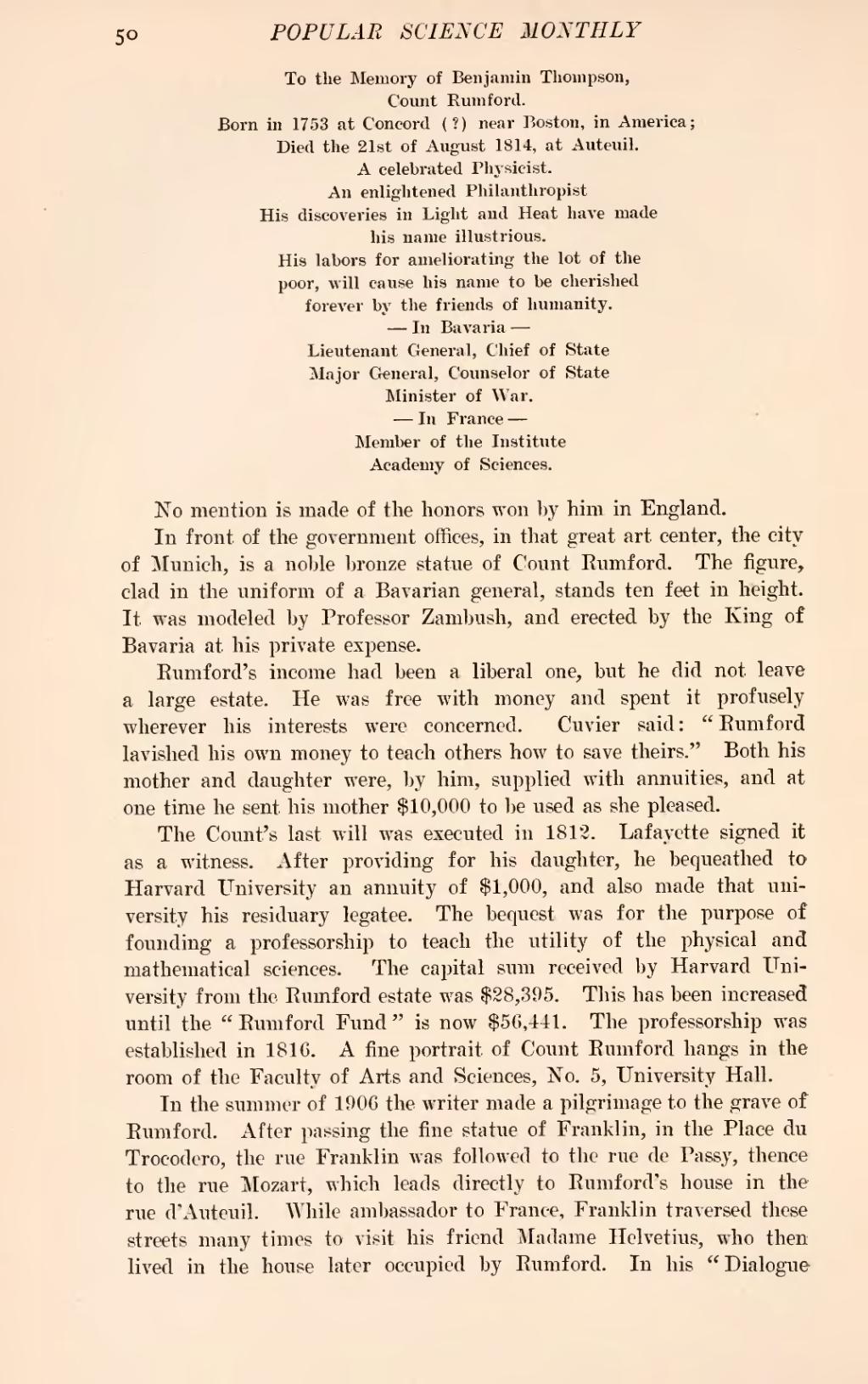| To the Memory of Benjamin Thompson, |
| Count Rumford. |
| Born in 1753 at Concord (?) near Boston, in America; |
| Died the 21st of August 1814, at Auteuil. |
| A celebrated Physicist. |
| An enlightened Philanthropist |
| His discoveries in Light and Heat have made |
| his name illustrious. |
| His labors for ameliorating the lot of the |
| poor, will cause his name to be cherished |
| forever by the friends of humanity. |
| —In Bavaria— |
| Lieutenant General, Chief of State |
| Major General, Counselor of State |
| Minister of War. |
| —In France— |
| Member of the Institute |
| Academy of Sciences. |
No mention is made of the honors won by him in England.
In front of the government offices, in that great art center, the city of Munich, is a noble bronze statue of Count Rumford. The figure, clad in the uniform of a Bavarian general, stands ten feet in height. It was modeled by Professor Zambush, and erected by the King of Bavaria at his private expense.
Rumford's income had been a liberal one, but he did not leave a large estate. He was free with money and spent it profusely wherever his interests were concerned. Cuvier said: "Rumford lavished his own money to teach others how to save theirs." Both his mother and daughter were, by him, supplied with annuities, and at one time he sent his mother $10,000 to be used as she pleased.
The Count's last will was executed in 1812. Lafayette signed it as a witness. After providing for his daughter, he bequeathed to Harvard University an annuity of $1,000, and also made that university his residuary legatee. The bequest was for the purpose of founding a professorship to teach the utility of the physical and mathematical sciences. The capital sum received by Harvard University from the Rumford estate was $28,395. This has been increased until the "Rumford Fund" is now $56,441. The professorship was established in 1816. A fine portrait of Count Rumford hangs in the room of the Faculty of Arts and Sciences, No. 5, University Hall.
In the summer of 1906 the writer made a pilgrimage to the grave of Rumford. After passing the fine statue of Franklin, in the Place du Trocodero, the rue Franklin was followed to the rue de Passy, thence to the rue Mozart, which leads directly to Eumford's house in the rue d'Auteuil. While ambassador to France, Franklin traversed these streets many times to visit his friend Madame Helvetius, who then lived in the house later occupied by Rumford. In his "Dialogue-
